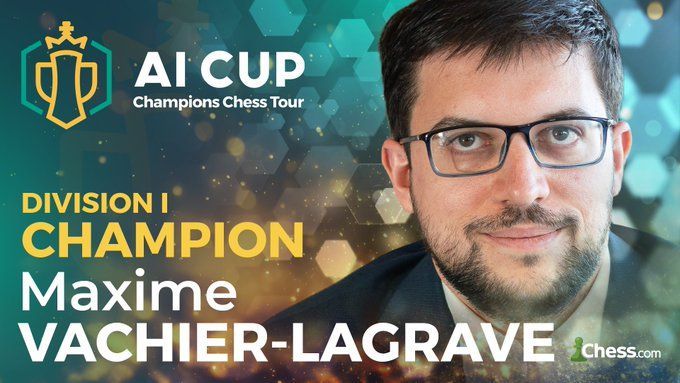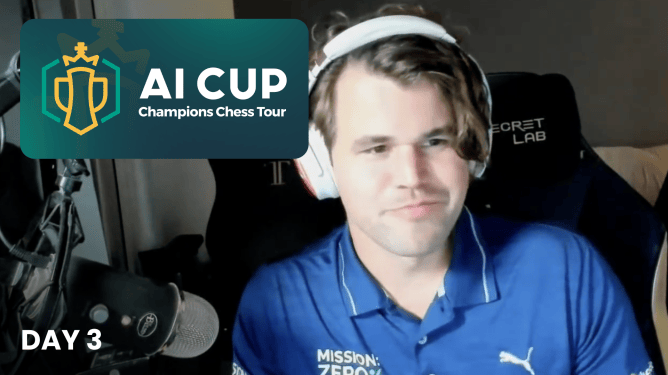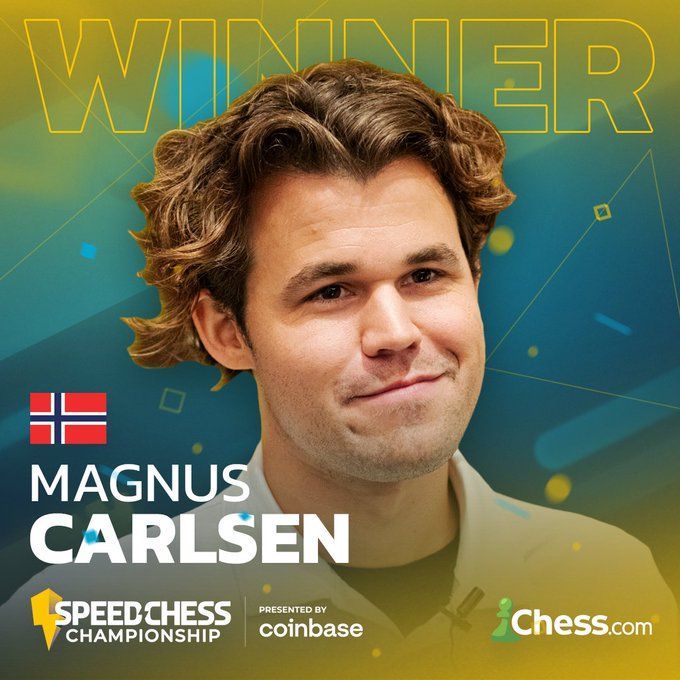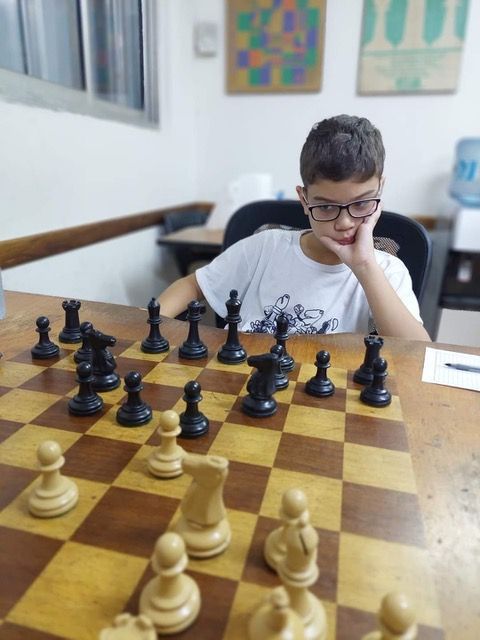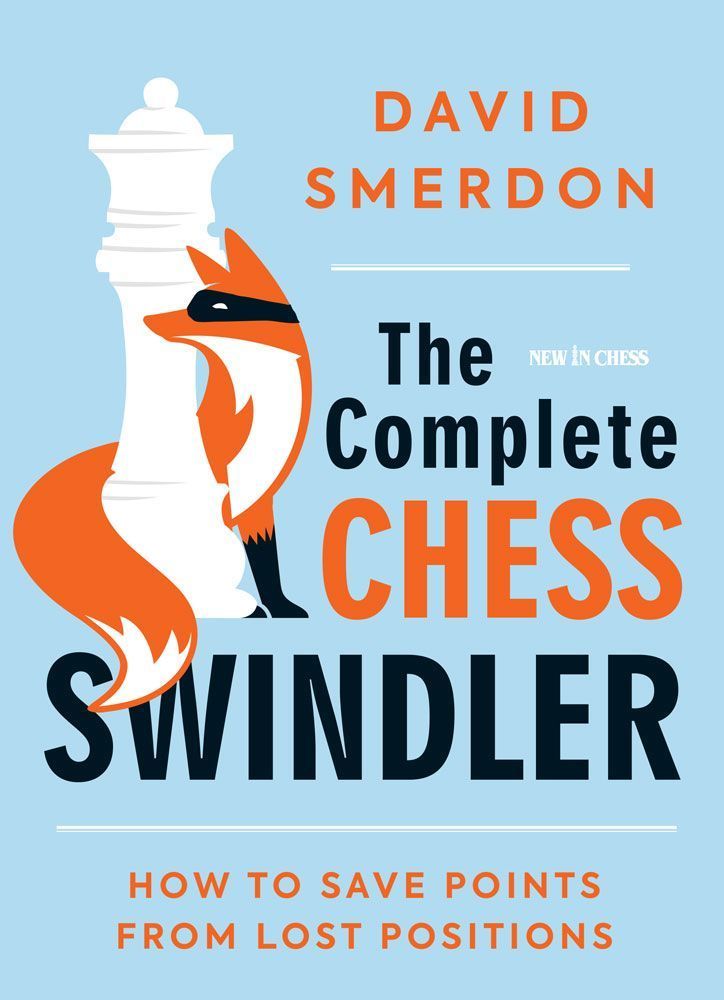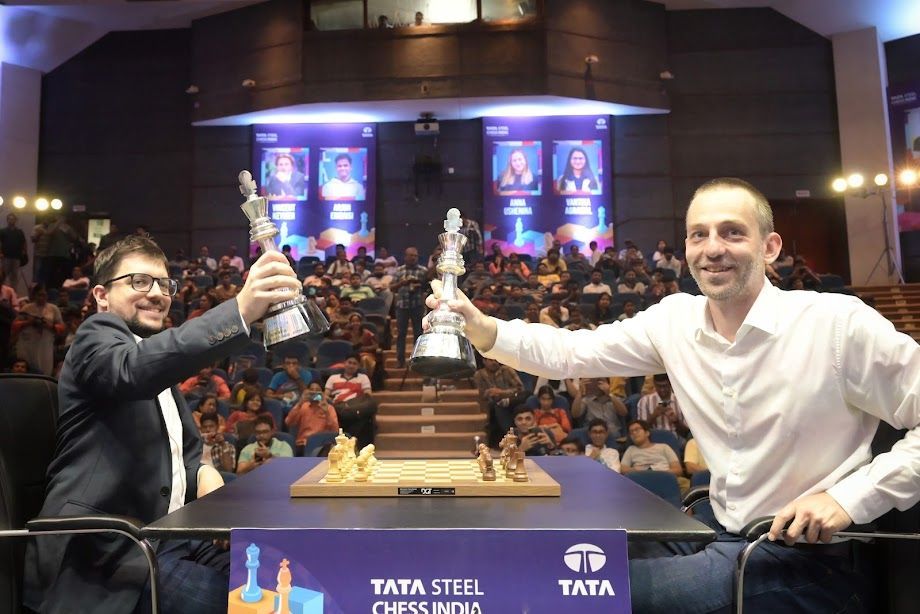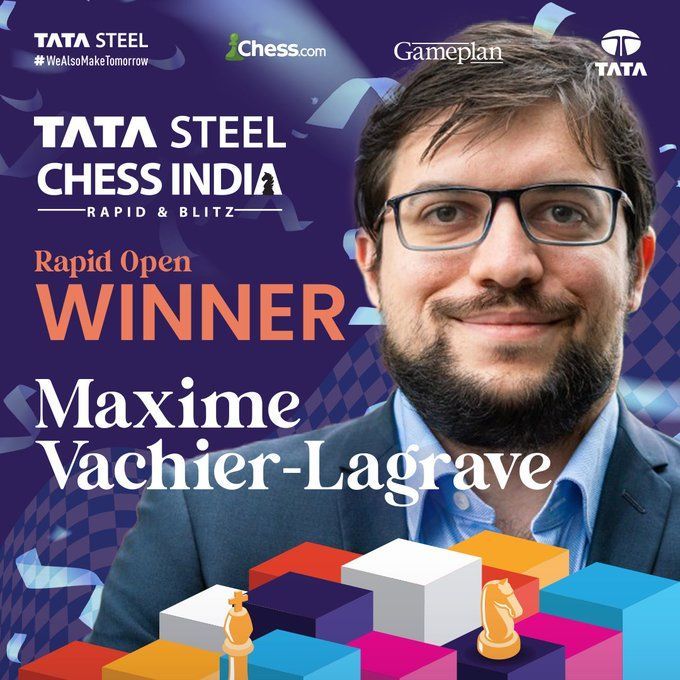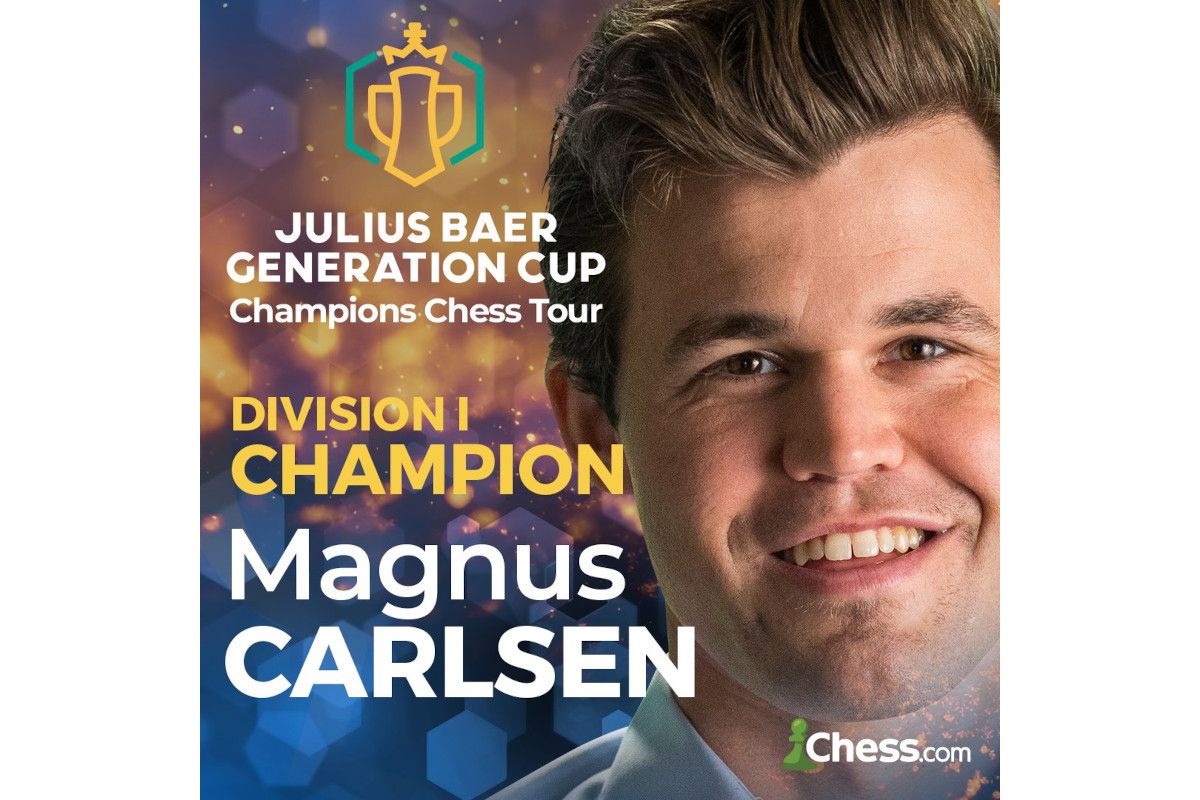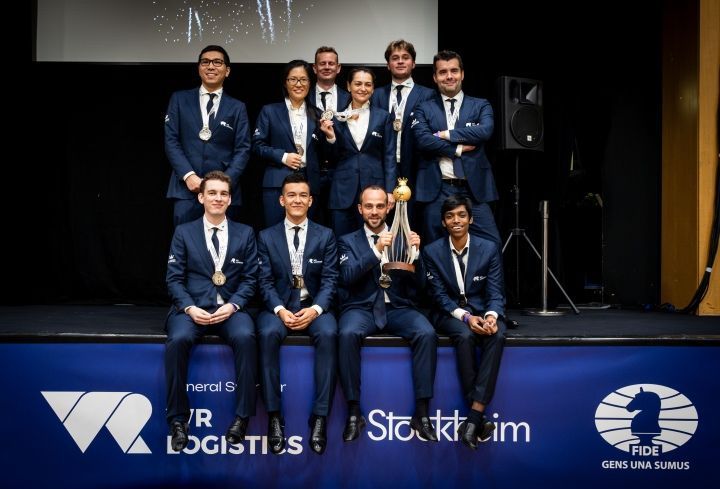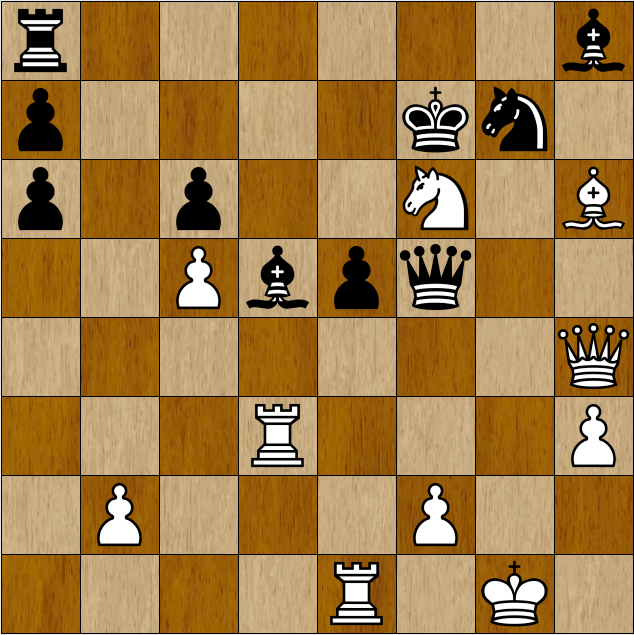Tiers For Fears
Fans were treated to arguably the greatest online rivalry in chess history recently, with the Chess.com Speed Chess Championship Grand Final showdown between Magnus Carlsen and Hikaru Nakamura seeing the Norwegian narrowly snatch victory by a solitary win to end the American speed maven’s hopes of a sixth successive victory.
But Carlsen’s narrow win left the salivating fans feeling they’d been denied seeing this epic gladiatorial speed contest going into overtime - but they didn’t have to wait long for the rivalry redux, as a couple of days later, both Carlsen and Nakamura went head-to-head yet again in the opening day of the AI Cup, the sixth and final leg of the
2023 Champions Chess Tour regular season.
The tournament, which runs September 25-29, again features the trendy new format of three divisions, each a double-elimination knockout, where losing one match drops the player to a lower bracket — but he/she can still come back from the dead to win the tournament. Each match is a maximum of four games. In the event of a tie, a sudden-death game of bidding Armageddon follows, with 15 minutes for the player who bids the higher amount of time.
But unlike the closeness of Friday evening’s Speed Chess Championship, Monday’s slower time control of the AI Cup between Carlsen and Nakamura turned into something of an easy crush for the former, as the world #1 went undefeated to effortlessly beat his US rival by 2.5-0.5. "In terms of rivals, there are tiers,” explained Carlsen firmly tongue-in-cheek during his post-match interview victory. “The first tier is like no rivals, and then a little bit after that, it's Hikaru... He's definitely second after no rivals.”
But there will be no zombie-like comeback for Nakamura to stage yet another showdown with Carlsen later in the tournament, as he was knocked out of the contest good and proper by also being beaten by Anish Giri in the losers’ elimination bracket on Day Two.
GM Magnus Carlsen - GM Hikaru Nakamura
AI Cup, Div 1, (1.3)
E91: King's Indian Defence, Classical, Kazakh variation
1.Nf3 Nf6 2.c4 d6 3.Nc3 g6 4.e4 Bg7 5.d4 O-O 6.Be2 Na6
The slightly odd-looking knight on the rim Kazakh variation was brought into popular usage in the early 1990s by the innovative Russian GM and theorist Igor Glek. This approach was chiefly used to sidestep the annoying exchange line that follows 6.Be2 e5 7.dxe5 dxe5 8.Qxd8 Rxd8 9.Bg5, where White can play Nd5 and/or O-O-O with quick development and a slight but annoying initiative.
7.O-O e5
White has now committed to short kingside castling, so ...e5 is OK to play.
8.Be3 Ng4 9.Bg5 Qe8 10.dxe5 dxe5 11.Qc1 h6 12.Bd2 Kh7 13.c5 c6 14.Bxa6
While this does shatter the pawn structure, Black does have good compensation with the bishop-pair and open lines - so the battle lines are now drawn.
14...bxa6 15.h3 Nf6 16.Rd1 Qe7 17.Be3 Ne8
Clearing the way for the KID thematic ...f5 push, but also a possible knight hop via e8-c7-e6 to pressure the c5-pawn/or possibly the knight swinging into d4.
18.Qc2 f5 19.exf5 gxf5
It's the time-old question in chess: will the hanging pawns be a help or a hindrance to Black?
20.Re1!
Strategically, the White rooks are best placed now on e1 and d1 - and Carlsen wastes no time in doing this.
20...Qf7 21.Rad1 Rg8?!
I can see the attraction for Nakamura with his intentions to generate play down the g-file - but the better option might well have been 21...Rb8 first, as not only does it bring the queenside into the game down an open file, but a later, strategic ...Rb4 lift could come in handy.
22.Ne2
Carlsen wastes no time in trying to exploit the f5 weakness created by Nakamura's last move - and with it, it is remarkable how quickly Black's game now implodes as the White knights wreak havoc on the kingside.
22...Be6 23.Ng3 Kh8
Nakamura fails to react to the dangers in his position, thinking that if he removes his king from the awkward x-ray attack down the b1-h7 diagonal, he can start pushing his hanging pawns. Instead, after the better 23...e4! 24.Nd4 Bxd4 25.Rxd4 Bd5 26.Bf4 Ng7! heading to the ideal e6 outpost, we have a balanced game.
24.Nh4!
Now suddenly Nakamura realises he's in deep trouble with his hanging pawns due to his misstep with ...Rg8.
24...Rf8?
Nakamura may well have realised the errors of his ways by removing the rook from the f-file, but returning to f8 only compounds his problems. The best now was 24...e4 25.Qe2! and try to find a way to cope with the double threat of either his queenside pawns falling, or a knight 'happening' on the kingside.
25.Bd2
Frankly, it is amazing how, in such simple positions, Carlsen easily finds all the best moves to relentlessly torture his opponents. Here, the little retreat to d2 not only stops any ...f4 tricks, but it also threatens Bc3 and suddenly those hanging pawns look set to hang high!
25...f4?
Carlsen is certainly giving his rival a bad time at the office, as can clearly be seen in Nakamura's frustration at being outplayed here, as he wildly lashes out. But then again, quite understandable when you realise that the engine suggests that the only "possible" try was 25...e4 26.Bc3 Kh7 allowing the tactical response 27.Nxe4! fxe4 28.Qxe4+ Bf5 29.Nxf5 Qxf5 30.Rd7! Kg8 (If 30...Qxe4? 31.Rxe4 Kg8 32.Rxe8! wins due to the 'windmill' rook capture on g7) 31.Qc4+ Kh8 32.Bxg7+ Nxg7 33.Ree7 and Black is in dire straits - and not in any good way with Mark Knopfler on lead guitar!
26.Ng6+ Kg8 27.Nh5
The rest is just carnage.
27...Bh8 28.Nxf8 Kxf8 29.g4 fxg3 30.Bxh6+ Kg8 31.Nxg3 Bxa2 32.Qe4
It's effectively game over with the queen coming in for the kill to secure the strong knight outposts on e4 and f5.
32...Bd5 33.Qg4+ Kh7 34.Qh4 Kg8 35.Ne4
There's no answer to the looming Rd3-g3+ threat.
35...Qf5 36.Rd3 Ng7 37.Nf6+ Kf7
(see diagram)
38.Nxd5!
Allowing Nakamura to restore the material imbalance - but at the cost of his king's safety!
38...Qxd3
The alternative, 38...cxd5 39.Rxd5 didn't even bear thinking about for a deflated Nakamura. 39.Qe7+ Kg6 40.Qd6+
So many ways to mate now, but for the purists and Mr Engine, the quickest way was 40.Qg5+ Kf7 (Or even quicker 40...Kh7 41.Nf6#) 41.Qf6+ Kg8 42.Ne7+ Kh7 43.Be3! and the only way to avoid the Qh6 mate is to give up the queen.
40...Kf7 41.Qd7+ 1-0
And Nakamura resigns as 41...Kg6 (or 41...Kg8) allows 42.Ne7+ picking up the loose queen on d3.
